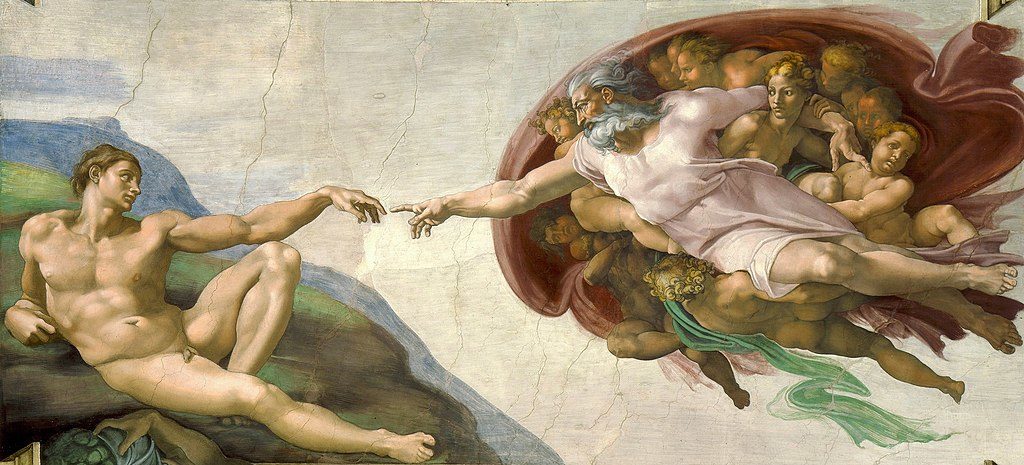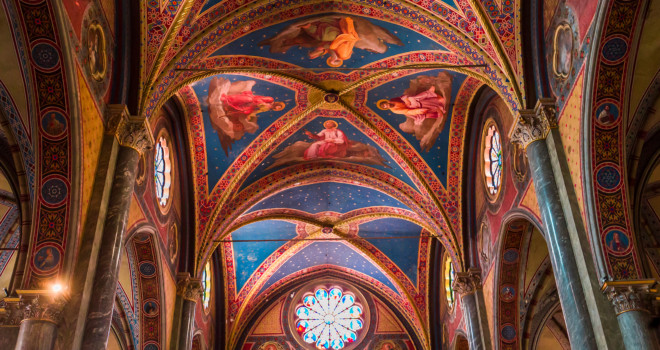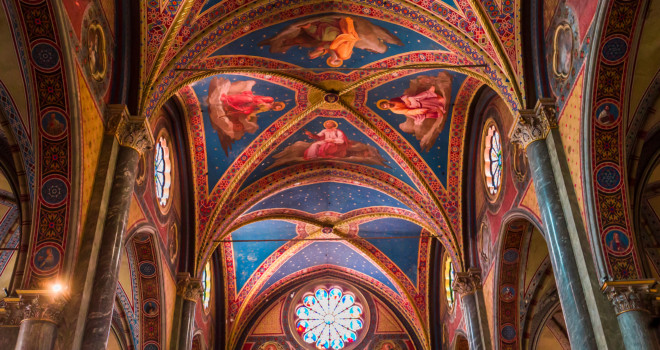Prayer and Plastic Art
“Plastic arts,” in its most general definition, refers to the visual arts whose products, once formed, remain still. Music and dance and culinary art appear and vanish, ebbing away while we enjoy them. But painting and drawing, sculpture and architecture, stay where they are. They sit and wait, perpetually available.
Of course, movies and dvd-players and
Youtube videos and Netflix accounts are also perpetually available. If you’re
looking for something to look at, why not choose something moving on a screen
instead of something frozen on a canvas or in a marble block?
Here’s one reason: because the plastic arts make it easier to pray — because a regular habit of prayer requires sustained attention, pursuit of insight, and tranquility. And the plastic arts train you in all three.
Looking at the plastic arts — unlike looking at a screen — is difficult. It demands a discipline of focus. You can lay back on a couch and watch a thirty-minute sitcom when you’re brain-dead, and you can still basically get everything the sitcom is trying to give you.
That’s not true of the plastic arts, and
it’s not true of prayer. God doesn’t change, the structure of salvation history
doesn’t change, the doctrines of the Church don’t change. And the images of the
plastic arts don’t change.
So you can’t just let your mind relax in a gelatinous torpor and allow itself to be affected by the moving images of a screen. There are no moving images in plastic art — which means your mind has to move. And learning how to move your mind, but not your body, over an extended period of time is indispensable to the life of prayer.
And in the plastic arts, your mind isn’t moving aimlessly: it’s looking for an insight. So too with meditation on divine things — we seek an inspiration. This is the second congruity between prayer and plastic art: the pursuit of insight.
Plastic art invites us to notice, to
discover. Take, for instance, Brueghel’s The
Fall of Icarus. One has to carefully search the lovely landscape before one
finally recognizes, off in a corner, the two legs of Icarus plunging into the
water.
Or have you ever noticed, in Michelangelo’s Creation of Adam, that the figure under God’s arm is a woman, that she appears to be coming out of God’s side, and that she alone of all God’s entourage is looking intensely at Adam?

Noticing is a moral faculty which
appreciation of the plastic arts increases. As Josef Pieper says, the plastic
arts give “a deeper and more receptive vision, a more intense awareness, a
sharper and more discerning understanding, a more patient openness for all things
quiet and inconspicuous, an eye for things previously overlooked.”
Video, whatever its merits (and there
are many, though enumerating them isn’t what we’re about here) doesn’t tend to
develop the capacity for noticing. If a movie wants you to notice something,
it’ll zoom in, or pan over, or switch to intense music so you can’t miss the
significance of something.
We pray to a God who tends to reveal Himself in a still, small voice. That is, in little things easily overlooked. The skill of discerning what is not obvious — that’s what prayer is all about.
Finally, appreciating the plastic arts relies on and promotes tranquility of soul. Restlessness, addiction to entertainment, the inability to be still and contemplate — that attitude is as incompatible with appreciating art as it is with the life of prayer generally. The practice of appreciating visual art encourages a calm frame of mind.
As Bergson puts it, “The plastic arts obtain an effect of the same kind by the fixity which they suddenly impose upon life, and which a physical contagion carries over to the attention of the spectator.”
Watching television usually has the general effect of hyperactivity. The unnaturally fast-paced movement of the events onscreen gives us an expectation of movement, speed, crisis. By contrast, Bergson reminds us that the stillness of visual representation in sculpture, painting and drawing carries over through the senses into the soul. It makes us sit still, be quiet, and attend. It’s a practice in meditation and can refocus our attention on important, peaceful matters.
We know that daily meditation is important, but we also know — if we’ve ever tried it — that it’s really hard. But what makes it particularly difficult is that we increasingly lack the human resources of sustained attention, pursuit of insight, and tranquility which are basic requisites for a life of prayer.
So here’s a suggestion: go buy some art
books, especially art books with images of Jesus and Mary and other biblical
themes. Landscapes are great too.
Keep them by your couch. Keep them by
your bed. Before going to sleep, take a few minutes and look at the images.
Focus, consider, be still. Pray.
I promise you’ll go to bed more peacefully than if you fell asleep looking at your phone.
✠
image: Isogood_patrick / Shutterstock.comSMLSize Guide














